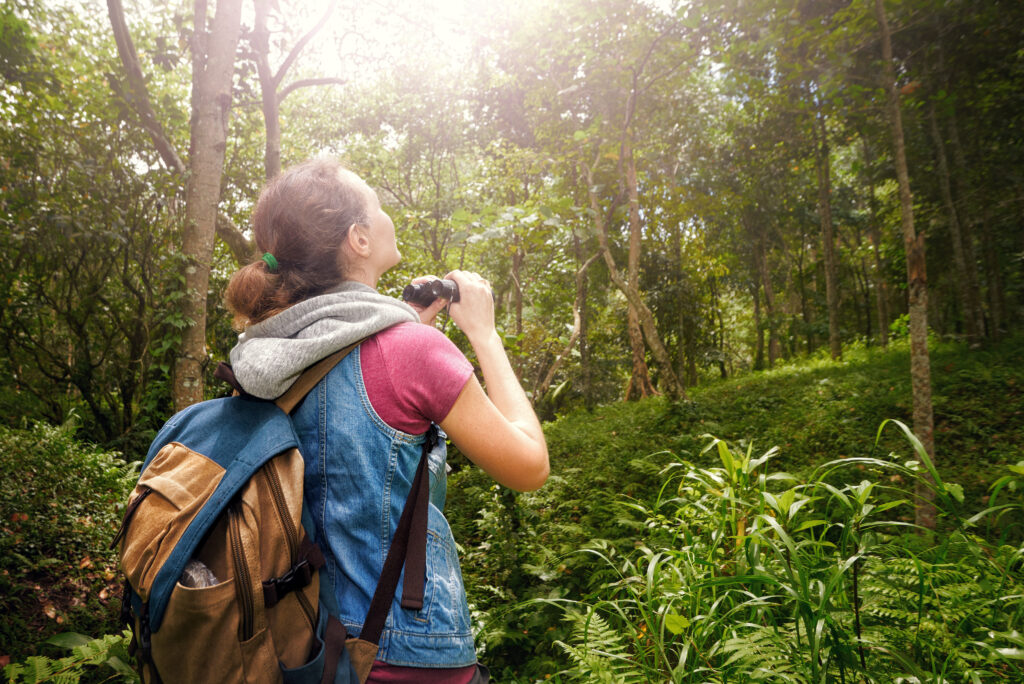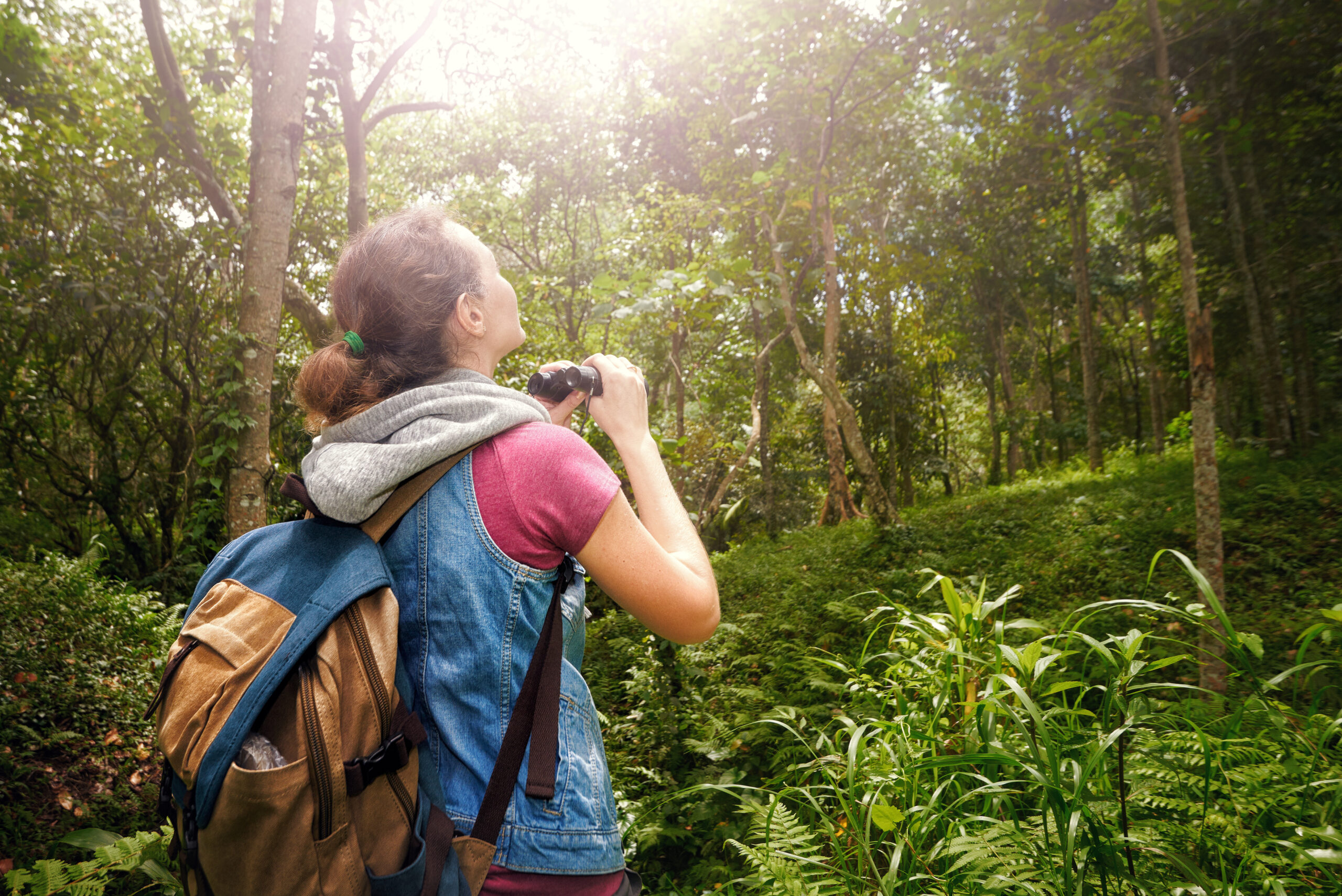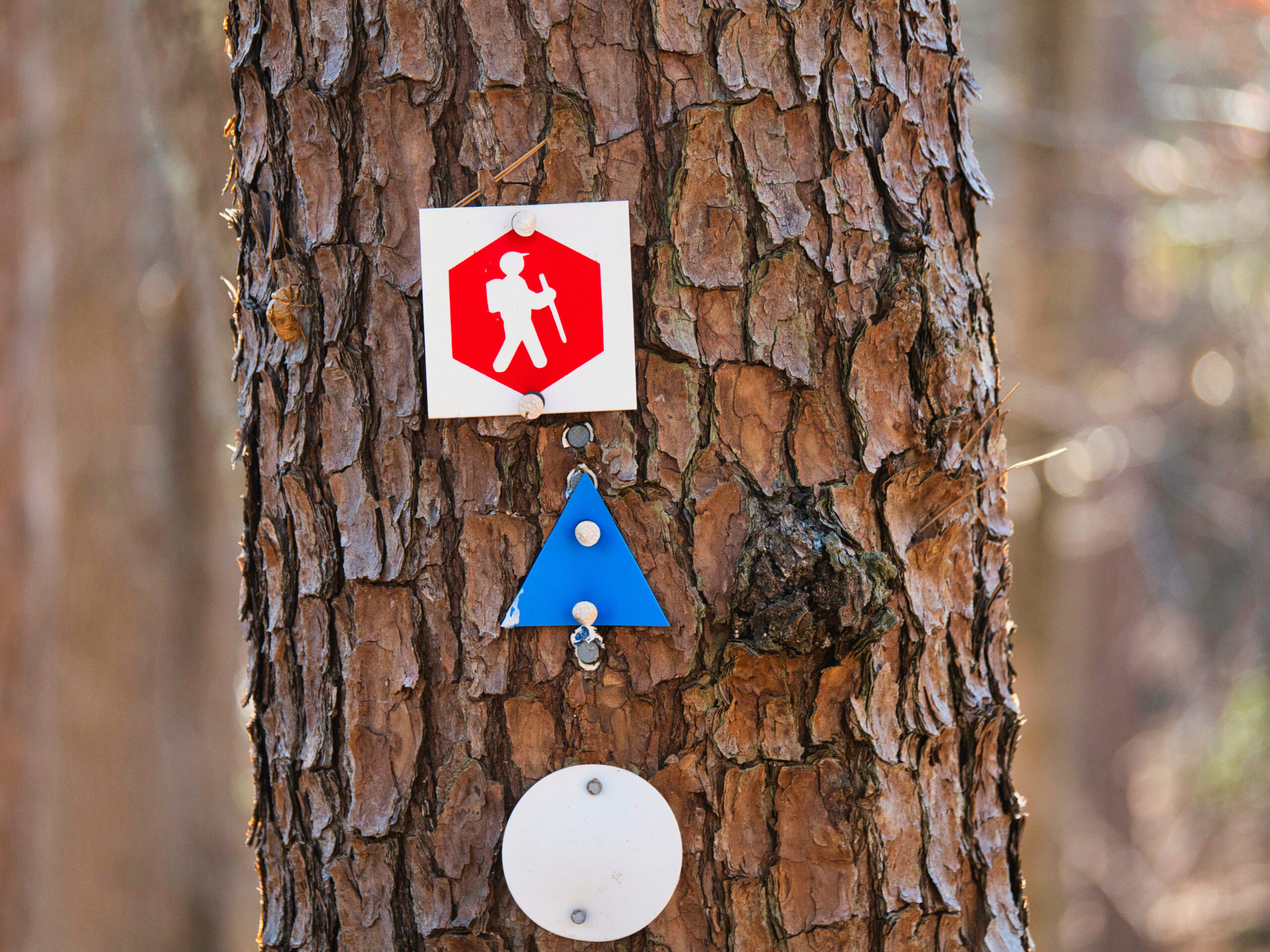
Wildlife Watching: Tips for trail enthusiasts

- reisertrailcraft
- August 25, 2023
Wildlife Watching
Do you love exploring the great outdoors? Are you a trail enthusiast who finds solace in nature’s raw beauty? If so, wildlife watching is an activity that is sure to captivate your senses. There is something truly magical about observing animals in their natural habitats, surrounded by the sights, sounds, and scents of the wilderness. In this article, we will explore some valuable tips and insights that will enhance your wildlife watching experiences. So grab your binoculars, put on your hiking boots, and get ready to embark on an unforgettable adventure!
Understanding Wildlife Behavior
The first step to becoming a successful wildlife watcher is to understand animal behavior. Animals have their own unique patterns, and familiarizing yourself with these patterns will significantly enhance your chances of spotting them. Educate yourself about the animal species that inhabit the area you’re visiting, their habitats, and their daily routines. Pay attention to the season and time of day, as these factors can influence their behavior as well.
For example, if you’re visiting a coastal area known for its bird population, understanding the migratory patterns of different bird species can help you determine the best time to observe them. Some birds may only pass through during certain seasons, while others may be year-round residents. By knowing their habits, you can plan your wildlife watching outings accordingly.
Decoding Animal Tracks and Signs
One of the most exciting aspects of wildlife watching is deciphering animal tracks and signs. By learning to interpret footprints, droppings, and other traces left behind by animals, you can gain valuable insights into their presence. Invest in a field guide or take a course to sharpen your tracking skills. With practice, you’ll soon be able to identify which animals have passed through an area and even understand their movements.
Imagine walking through a dense forest and coming across a set of fresh footprints. By examining the size, shape, and depth of the tracks, you can determine the type of animal that made them. Perhaps it’s a deer, leaving behind its distinctive cloven hoof prints. Or maybe it’s a smaller mammal like a raccoon, leaving behind its characteristic hand-like prints. These tracks can tell a story of the animal’s recent activities, giving you a glimpse into their world.
Best Time for Wildlife Watching
Timing is crucial when it comes to wildlife watching. The early morning and late afternoon are considered the optimal times for spotting animals. During these hours, many creatures are active, making their way to water sources or seeking out food. Additionally, animals tend to be more active during the cooler parts of the day, especially in warmer climates. Remember to plan your wildlife watching outings accordingly to maximize your chances of witnessing incredible wildlife moments.
Picture yourself sitting quietly near a watering hole as the sun begins to rise. The air is cool, and the surrounding landscape is shrouded in a soft golden light. Suddenly, a herd of elephants emerges from the trees, their massive forms gracefully moving towards the water. You watch in awe as they drink, bathe, and interact with one another, their behavior unfolding before your eyes. This magical experience is made possible by understanding the best time for wildlife watching.
Safety Measures While Observing Wildlife
While wildlife watching can be an exhilarating experience, it’s crucial to prioritize safety. Respect the animals’ space and keep a safe distance at all times. Remember that you are a visitor in their home and they should always be given the respect and space they deserve. Avoid sudden movements or loud noises that may startle the animals and disrupt their natural behavior. It’s also essential to be aware of your surroundings, watch for potential hazards like steep cliffs, and be prepared for changing weather conditions.
Imagine finding yourself in the presence of a majestic grizzly bear in its natural habitat. The sheer power and beauty of this creature leave you in awe. However, it’s important to remember that bears are wild animals and should be treated with caution. Keeping a safe distance and observing from a designated viewing area ensures both your safety and the bear’s well-being. By following these safety measures, you can enjoy the wonders of wildlife while minimizing any potential risks.
Essential Gear for Wildlife Watching
Having the right gear can make all the difference in your wildlife watching adventures. Let’s take a look at some of the essential items that should be a part of every trail enthusiast’s toolkit.
Choosing the Right Binoculars
A good pair of binoculars is an indispensable tool for wildlife watchers. Invest in high-quality binoculars that offer clear and crisp images, allowing you to observe animals from a distance without intruding on their space. Look for binoculars with a magnification power of at least 8x or 10x and an objective lens diameter of 42mm or larger for optimal performance.
With the right binoculars, you’ll be able to spot the intricate details of a bird’s plumage or the subtle movements of a grazing deer. The ability to see wildlife up close, while still maintaining a respectful distance, enhances the overall experience and allows you to appreciate the beauty of nature in its purest form.
Whether you’re exploring a dense forest or observing wildlife in an open field, binoculars provide a window into a world that might otherwise go unnoticed. They allow you to witness the behavior of animals without disturbing their natural habitat, giving you a glimpse into their daily lives.
Importance of Comfortable Footwear
When it comes to wildlife watching, comfortable footwear is a non-negotiable. Opt for sturdy hiking boots that provide ample support and protection for your feet. Look for boots with good traction so that you can navigate trails with ease, even in challenging terrain.
With the right footwear, you’ll be able to explore various habitats without worrying about discomfort or injury. Whether you’re traversing rocky slopes or wading through shallow streams, your feet will remain well-supported and protected.
Comfortable footwear also plays a crucial role in enhancing your overall experience. When your feet are happy and well-cushioned, you can focus on the sights and sounds around you, rather than being distracted by discomfort. This allows you to fully immerse yourself in the natural environment and appreciate the wonders of wildlife.
Necessity of Weather-Appropriate Clothing
Weather conditions can change rapidly when you’re out on the trails, so it’s crucial to dress appropriately. Layer your clothing to ensure you’re prepared for both warm and cold temperatures. Choose lightweight, moisture-wicking materials that will keep you cool and dry during strenuous hikes.
By wearing weather-appropriate clothing, you’ll be able to adapt to changing conditions and stay comfortable throughout your wildlife watching adventure. Whether you’re hiking under the scorching sun or facing a sudden downpour, the right clothing will help regulate your body temperature and protect you from the elements.
Additionally, wearing neutral-colored clothing will help you blend in with your surroundings and minimize your impact on the wildlife. Bright colors can startle animals and disrupt their natural behavior, so opting for earth tones or camouflage patterns is ideal.
Remember, wildlife watching is not just about observing animals; it’s about immersing yourself in their world and becoming a part of their environment. By having the right gear, you can enhance your experience and create lasting memories while respecting the natural habitats of the creatures you encounter.
Ethical Wildlife Watching
As wildlife enthusiasts, it’s our responsibility to engage in ethical wildlife watching practices that prioritize the well-being of the animals and their habitats. By following a few simple guidelines, we can ensure that our interactions with wildlife are respectful and sustainable.
Respecting Animal Habitats
When exploring the wilderness, always remember that you are a guest in the animals’ homes. It’s important to tread lightly and avoid disturbing nests, burrows, or dens. These structures are essential for the survival of many species, providing shelter and protection for their young. By refraining from trampling on delicate vegetation and sticking to designated trails, we can minimize our impact on the delicate ecosystems that wildlife depend on. By respecting animal habitats, we contribute to their preservation and ensure that they remain a safe haven for generations to come.
Imagine stumbling upon a bird’s nest hidden among the branches of a tree. The nest is carefully constructed, woven together with twigs, leaves, and feathers. Inside, you can see the delicate eggs, waiting to hatch. By keeping our distance and observing from afar, we allow the parents to return to their nest and continue caring for their young without interruption.
Keeping a Safe Distance
While it may be tempting to get close to animals for a better view, it is important to maintain a safe distance. This not only ensures our safety but also respects the boundaries of the animals. By using binoculars or zoom lenses, we can observe animals from afar, allowing them to go about their activities undisturbed. By giving animals the space they need, we reduce stress and protect their natural behaviors.
Imagine coming across a majestic moose grazing in a meadow. Its large antlers and powerful presence captivate your attention. Instead of approaching it, you take a moment to appreciate its beauty from a distance. You watch as it moves gracefully through the tall grass, undisturbed by your presence. By maintaining a safe distance, you are able to witness its natural behavior and truly appreciate its wildness.
Feeding Wildlife: Why It's Discouraged
Feeding wildlife, no matter how enticing it may seem, can have serious consequences for both animals and ecosystems. While it may be tempting to offer a snack to a curious squirrel or a friendly deer, it is important to remember that human food is not part of their natural diet. When animals become reliant on handouts, it can disrupt their natural foraging behaviors and lead to an imbalance in their diet. Additionally, human food is often unhealthy for animals and can lead to malnutrition or illness.
Imagine encountering a group of playful raccoons during your wildlife watching adventure. They approach you, hoping for a treat. While it may be tempting to feed them, you resist the urge and observe from a distance. You watch as they skillfully search for food in the underbrush, using their dexterous paws to uncover insects and small creatures. By observing wildlife from a distance and respecting their autonomy, we allow them to navigate their own ecosystems and maintain their natural behaviors.
Identifying Different Species
Part of the joy of wildlife watching is being able to identify the various species you encounter. Let’s explore some tips for identifying common animals you may come across on your trails.
Bird Watching Basics
Birds are captivating creatures that adorn the skies and trees with their vibrant plumage and melodious songs. Start by learning about the different species found in your area and their unique physical characteristics. Take note of their size, shape, color patterns, and distinctive features such as beak shape or song. Field guides and birding apps can be great companions to help you identify these winged wonders.
Recognizing Common Mammals
While birds have the skies, mammals rule the land. From curious squirrels to majestic deer, the animal kingdom is full of diverse mammals, each with its own charm. Study the various mammals that inhabit your area and familiarize yourself with their typical size, behavior, and habitat preferences. Look for key identifiers like fur color, tracks, and facial features to help you identify them in the wild.
Insect Identification Tips
Insects may be small, but they play a crucial role in our ecosystems. Delve into the world of insects by learning to identify common species. Study their unique body structures, such as wings, antennae, and coloring. Observe their behavior and feeding habits. By familiarizing yourself with these tiny creatures, you’ll gain a whole new appreciation for the intricate web of life that exists in the wilderness.
Wildlife watching is a gateway to understanding and appreciating the natural world around us. By respecting wildlife and their habitats, equipping yourself with the right gear, and immersing yourself in the beauty of nature, you can embark on rewarding adventures that will create memories to last a lifetime. So venture out into the wilderness, embrace the serenity of the trails, and let the wonders of wildlife unfold before your eyes.
- August 25, 2023
- By reisertrailcraft
Related Posts

Wildlife Watching
